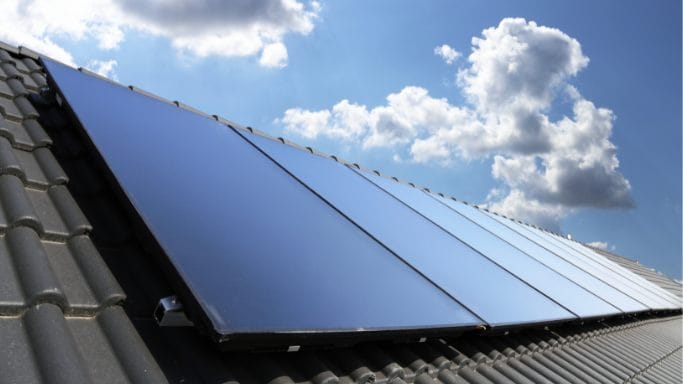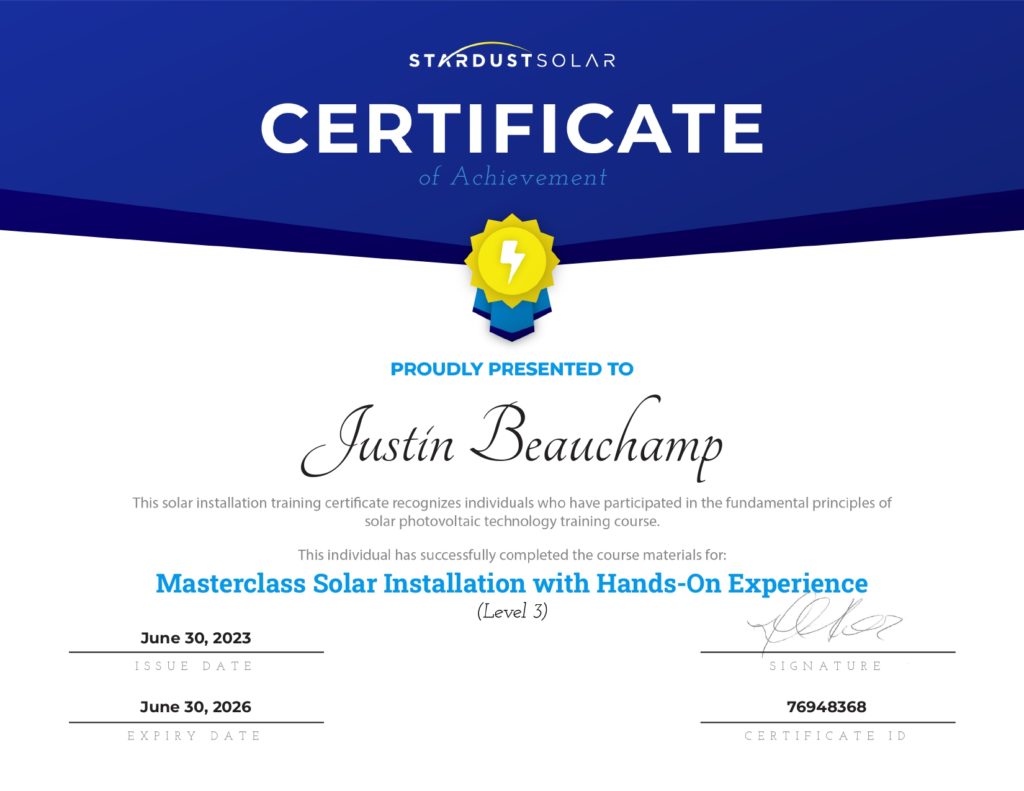Hybrid solar systems, or photovoltaic (PV) systems, are reinventing the energy landscape by combining the benefits of grid-tied and off-grid systems.
According to a 2023 report by the Canadian Solar Industries Association (CanSIA), the adoption of hybrid setups in Canada has increased by 15% annually over the past five years—driven by advancements in power cell storage technology, such as lithium-ion batteries.
With the average cost of a residential hybrid solar system installation in Canada ranging from CAD 15,000 to CAD 30,000—understanding the installation costs is paramount, the same as learning how it works.
What’s a Hybrid PV System?
A renewable energy solution that integrates panels, inverters, and a battery bank to ascertain a continuous power supply, even during grid outages. It has two work modes:
- Grid-tie System: Connected to the main power grid. Uses grid electricity and can send excess solar energy back to it.
- Off-grid System: Not connected to the main power grid. Relies on its own power sources like a PV panel, power inverter, and battery.
Types of Hybrid Solar PV Systems
Basic PV Inverter
An entry-level solution that fuses a PV and battery inverter. It is designed to manage the energy production and flow between PV panels, batteries, and the grid:
- Single device integration combines PV and power cell inverter in a single unit.
- DC coupling and installing solar panels are connected to the storage cell via the inverter’s DC input.
- Inverter capacity ranges from 3 kW to 10 kW.
- Voltage operates with 48V systems.
- DC to AC conversion efficiency ranges from 90% to 95%.
Multimode PV Inverter
This offers more advanced features than a basic one for your solar panel installation process.
- Can switch between grid-tied, off-grid, and battery backup system.
- Supports both DC and AC coupling.
- Inverter capacity ranges from 5 kW to 20 kW.
- Compatible with high-voltage systems (e.g., 400V).
- Efficiency ranges from 92% to 97%.
All-in-One Battery Energy Storage System (BESS)
BESS integrates all the components required for storage and management into a single, compact unit.
- This includes the inverter, charge controller, and the management system.
- Inverter capacity ranges from 3 kW to 15 kW.
- Battery capacity ranges from 5 kWh to 20 kWh.
- Efficiency can exceed 90%.
Advanced AC Coupled System
This racking system uses separate inverters for the panels and the storage for greater flexibility and scalability.
- Uses distinct inverters for PV generation and storage, connected through the AC bus.
- Supports different configurations and can be integrated with existing setups.
- PV inverters range from 3 kW to 10 kW, while inverters range from 5 kW to 20 kW.
- Power ranges from 10 kWh to 100 kWh or more.
- Conversion efficiency ranges from 85% to 95%.
What are the Components Used?
PV Panels
Photovoltaic (PV) panels alter sunlight into direct current (DC) electricity. Most solar power systems are made from silicon:
- Monocrystalline Panels: 15-22% efficiency
- Polycrystalline Panels: 13-17% efficiency
DCDB (Direct Current Distribution Box)
DCDB manages the DC power generated by the panels before it is sent to the inverter. It features:
| Surge Protection Devices (SPD) | Protect the panels from voltage spikes and surges to ensure the safety of the electrical components. |
| DC Circuit Breakers | Provide isolation and protection by disconnecting the modules from the rest of the setup in case of faults or maintenance requirements. |
| Combiner Box | Combines the output from multiple module strings into a single DC output to simplify the electrical wiring and connections to the inverter. |
Charging Controller
The charging controller regulates the voltage and current from the modules to the bank, preventing overcharging and over-discharging.
Two main types consist of:
- Pulse Width Modulation (PWM)
- Maximum Power Point Tracking (MPPT) controllers
The controller ensures that the battery bank is charged at the correct voltage, prolonging life and maintaining optimal performance. MPPT controllers offer efficiencies of 95-99%, whereas PWM controllers are around 70-80%.
Hybrid Inverter
A hybrid inverter, also known as a bidirectional inverter, converts DC electricity from the modules into alternating current (AC) electricity used by household appliances. It also manages the energy’s flow between the panels, batteries, and the grid.
ACDB (Alternating Current Distribution Box)
The ACDB manages and distributes the AC power from the inverter to the household electrical panel or electric meter.
Battery Bank
Batteries store excess energy for later use.
- Lithium-ion batteries are favoured due to their high density, longer cycle life, and greater efficiency than traditional lead-acid batteries.
- Capacity is measured in kilowatt-hours (kWh), indicating the total amount the batteries can store. Residential systems range from 5 kWh to 20 kWh.
- Depth of Discharge (DoD) shows the percentage of battery capacity that can be used. Higher DoD values (80-90%) are preferable.
- Cycle life is the number of complete charge-discharge phases a battery can undergo before its capacity degrades. Lithium-ion batteries offer 5,000 to 10,000 cycles.
How Does a Hybrid PV Setup Work?
- The panels take sunlight and convert it into DC electricity.
- The DC electricity from the panels is routed through the DCDB, which manages the power and provides protection. The charge controller then directs the flow of DC electricity to the battery bank.
- The inverters convert the regulated DC electricity into AC electricity (suitable for household appliances).
- Excess DC electricity, not immediately used by household appliances, is stored in the battery bank.
- The converted AC electricity is distributed to the household circuits through the ACDB, which includes protection devices like SPDs and AC circuit breakers to ensure safe operation.
- The inverters manage the interaction with the electricity grid. It can export excess electricity generated by the boards to the grid, earning feed-in tariffs or tax credits. During periods of low generation or high demand, the panels can import electricity from the grid to ensure a continuous power supply.
Curious About Associated Costs?
Here is a cost breakdown:
| Component | Estimated Installation Costs |
| 6.6kW panels | $6,000 – $8,500 |
| 6.6kW Battery ready system | $7,000 – $9,500 |
| 10kWh Solar battery | $10,000 – $12,000 |
| 6.6kW Hybrid with 10kWh battery | $16,000 – $21,000 |
| Add PV back-up | $1,500 – $3,500 |
You can expect to pay between $16,000 and $21,000 for a 6.6kW setup with a 10kWh battery.
Maintenance Tips
PV Panels
Requires cleaning at least twice a year or more frequently in dusty or polluted areas.
- Use soft brushes, squeegees, or low-pressure water to remove dirt, dust, and debris.
- Mild, non-abrasive detergents can be used for stubborn grime.
- Ensure that no new objects (e.g., tree branches or buildings) are casting shadows on the panels, as shading can reduce efficiency.
Inverter
Ensure that the inverter is ventilated to prevent overheating.
- Use compressed air or a soft brush to remove dust from cooling fins and fans.
- Search for indicators of wear, corrosion, or damage in the wiring and connectors.
Battery Bank
Maintain the battery bank in a temperature-controlled environment, between 20°C and 25°C. Use a Battery Management System (BMS) to track and manage charge cycles.
DCDB (Direct Current Distribution Box)
Regularly check SPDs for functionality. Replace them if they show signs of wear or damage. Test DC circuit breakers periodically to ensure they trip correctly.
ACDB (Alternating Current Distribution Box)
Test RCDs regularly to ensure they trip in case of leakage currents. Check SPDs for signs of wear or damage and replace them as needed.

Ensure Continuous Power with MAG Solar
If you’ve been considering the benefits of a hybrid PV panel installation for your home or business, having the right components and proper maintenance can provide a dependable and cost-effective solution.
Investing in a hybrid solar energy system increases energy independence while enhancing your power security and reducing electricity costs.
Ready to make the switch and install solar panels? Contact a trusted installer to help you get started in maximizing renewable energy.
No more DIY solar panel installation. MAG Solar is the best solar installer you can call today for a reasonable upfront cost and efficient PV setup.
Whether you’re going green for the environment or to cut costs, MAG Solar makes solar panel installation easy and affordable.
Frequently Asked Questions
What is the average return on investment (ROI) for a hybrid setup in Canada?
The average ROI of a solar installation ranges from 7% to 12% per year—influenced by factors such as:
- Energy savings, homeowners can save between 50% and 80% on their electricity bills, depending on solar power system size and energy usage.
- Property value, solar panel system installations increase property values by up to 4%.
How much can a hybrid setup reduce greenhouse gas emissions?
A 6.6 kW setup reduces approximately 5 to 7 metric tons of CO2 per year, equivalent to the emissions from driving 25,000 kilometres in a gasoline-powered vehicle. Over 25 years, this amounts to a reduction of 125 to 175 metric tons of CO2.
What percentage of energy needs can a hybrid installation meet in various Canadian climates?
- Southern Canada (e.g., Ontario, British Columbia): A well-sized setup from solar companies meets 60% to 80% of annual power needs.
- Northern Canada (e.g., Yukon, Northwest Territories): Due to shorter sunlight hours and lower solar irradiance, a system from a solar company covers 40% to 60% of power needs.

